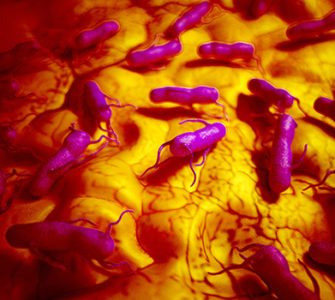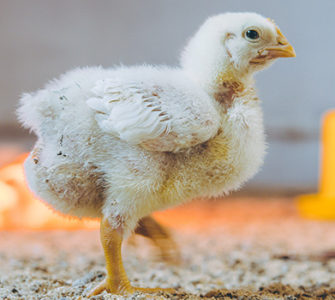Necrotic enteritis control helps reduce Salmonella colonization
Maintaining good intestinal health in broilers is essential for minimizing the presence of Salmonella in birds sent for processing, Manuel Da Costa, DVM, PhD, associate director for Outcomes Research at Zoetis told Poultry Health Today.
On farms where Salmonella is already an issue, vaccinating broilers against the pathogen also should be considered, he advised, pointing to research demonstrating the value of both approaches.
He explained that coccidiosis, a parasitic disease, predisposes birds to necrotic enteritis (NE), which is caused by the bacterium Clostridium perfringens. If left uncontrolled, NE can be a major problem in broilers, especially those raised without antibiotics (RWA).
His research showed that once birds start having issues with NE, the prevalence of Salmonella can increase substantially. On the other hand, if coccidiosis and NE are prevented, Salmonella colonization can decline.
Coccidiosis-control strategies in broilers that are RWA include vaccination, non-ionophore anticoccidials or a combination of both, known as a bioshuttle program. Alternative products such as nutraceuticals, prebiotics and probiotics also have been used with some success. “You…need to have a multifactorial approach to the gut health problem.” Da Costa said.
Field trials
He ran trials with Colorado Quality Research that included the use of bacitracin, the antibiotic most commonly used to prevent and control NE.
In the first trial, birds were fed controlled diets with no feed additives. A second group was fed bacitracin. Both groups were then challenged with Clostridium at 18 days of age. Birds in both groups were exposed to Salmonella at different times: 4, 18 and 21 days of age. Those birds challenged with both Clostridium and Salmonella on day 18 of age had a higher recovery of Salmonella compared to those groups exposed to Salmonella on day 4 or day 21 of age.
Bacitracin targets Gram-positive bacteria, Da Costa explained, while Salmonella is Gram-negative and not affected by the antibiotic. However, the trial results demonstrated that in birds where Clostridium is adequately controlled, Salmonella doesn’t proliferate and colonization is reduced. Salmonella control is, therefore, an indirect effect of keeping gut health in good condition, he commented.
Because the trial showed a clear correlation between NE and Salmonella, Da Costa decided to run two other trials, with the goal of mitigating Salmonella in the absence of bacitracin.
Interventions
Diets with bacitracin, a leading probiotic and a non-ionophore anticoccidial (zoalene) were tested in the two trials. In addition, a test group of birds vaccinated with a live Salmonella Typhimurium vaccine with no feed-additive intervention was also included in both trials. The flocks were challenged with Salmonella and Clostridium at 18 days of age. Birds that received bacitracin and the non-ionophore anticoccidial to help prevent coccidiosis had a decreased recovery level of Salmonella compared to probiotic and no-intervention birds, he said.
The live-S. Typhimurium vaccinated birds were shown to have reduced Salmonella numbers even when the severe enteric challenge was present, Da Costa said.
“If you’re looking to control Salmonella, biosecurity is No. 1, [along] with gut-health management,” Da Costa explained. “If you start to have gut health-management issues, you’re probably going to increase your likelihood of detecting Salmonella at the [processing] plant and live-S. Typhimurium vaccine intervention can likely help you [in] facing this challenge.”
Editor’s note: This video interview, podcast and news article were developed independently by the editors of Poultry Health Today. They are presented here solely for their news value. The opinions and recommendations presented are not necessarily shared by the editors of Poultry Health Today or the interviewee’s employer.
Posted on February 7, 2019

















